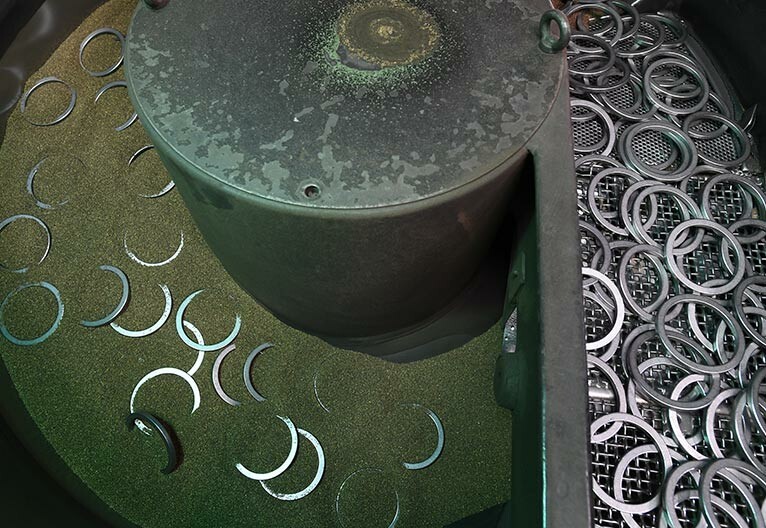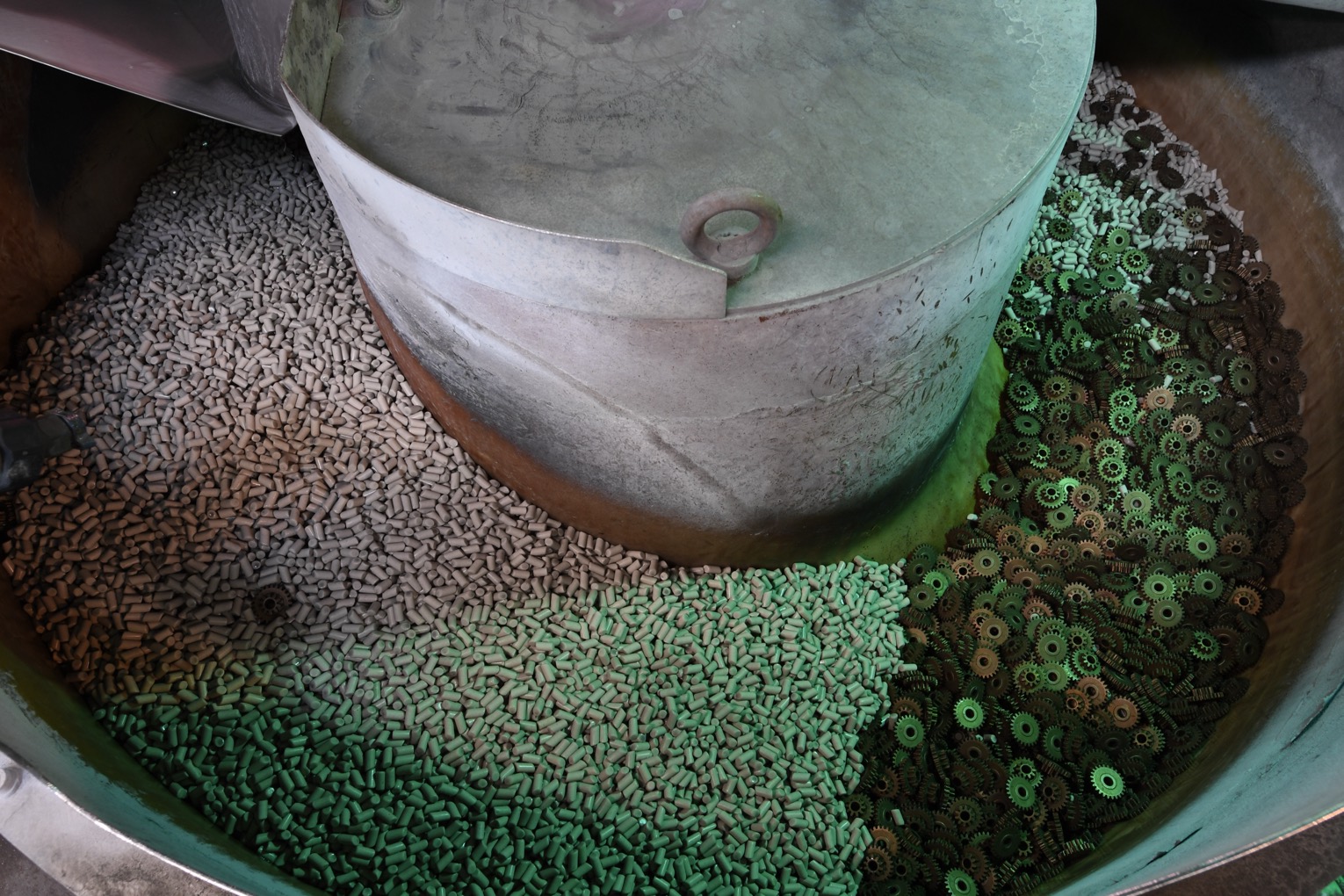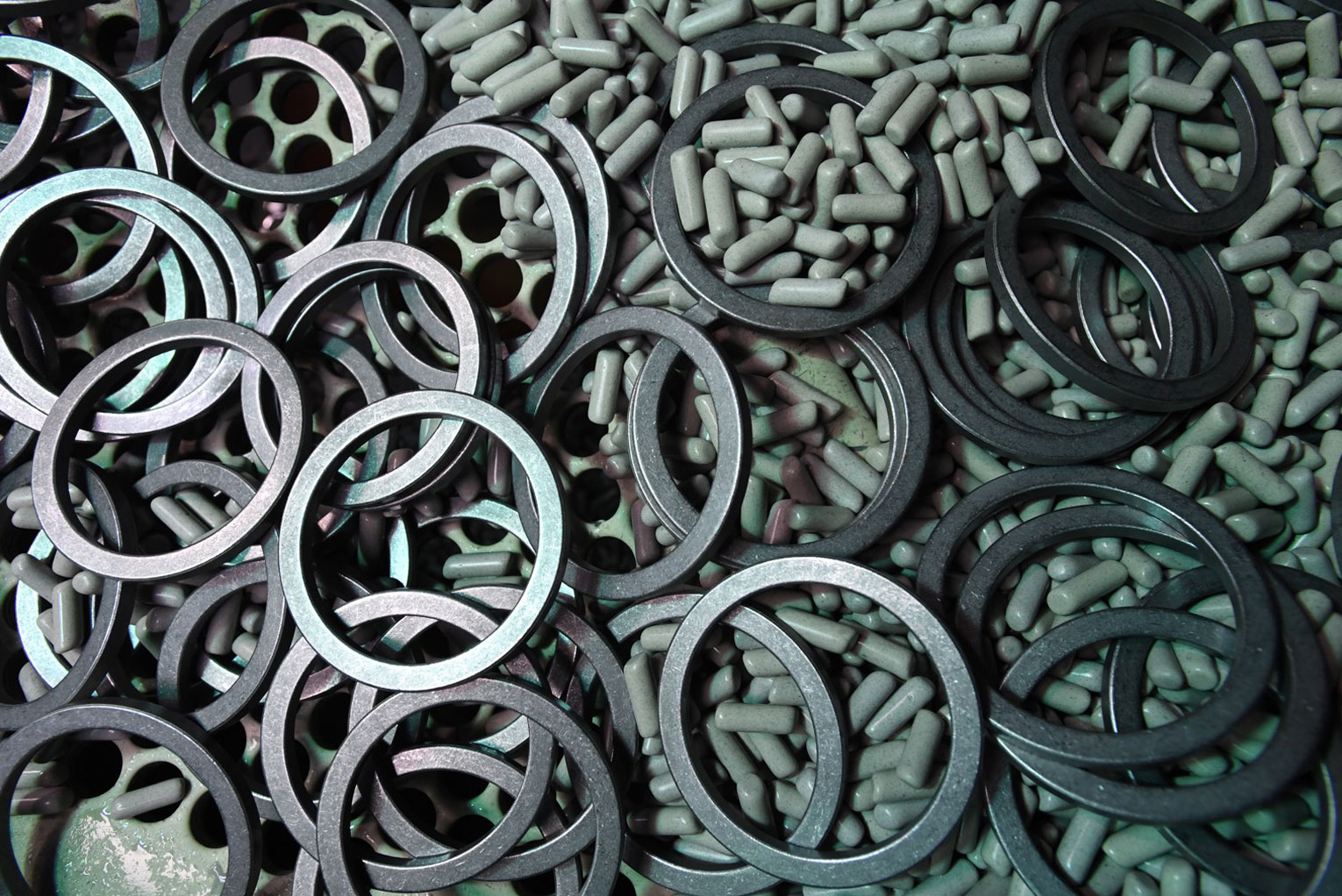What is tumbling?
The tumbling process begins at the end of the actual sintering process and is necessary to eliminate corners and jagged edges of the sintered part.
This stage of the process is used to remove substrate residues, burrs and imperfections from previous processing. The aim is to obtain an even and smooth surface, free of imperfections. Following the tumbling phase, the mechanical part is ready to be used immediately or to be treated with further processing stages aimed at providing the sintered parts with additional physical-mechanical properties that are not currently present.

How does the tumbling process take place?
Metal tumbling takes place inside a metal tumbler, i.e. a purpose-built rotating drum, in which mechanical parts are rolled with the addition of abrasive material, such as water and gravel or chemical compounds. Metal tumbling can also be carried out using a dry process. In both processes the aim is to obtain a regular sintered piece free from imperfections. The industrial tumbler is a low-intensity vibrating machine for finishing and evening out the surface of sintered parts. The length of the tumbling process depends on the desired result. It is a stage of the process that is particularly suited to processing a large number of small parts in a relatively short time.

Further processing stages
Once the tumbling stage has been completed, the sintered part is ready to move on to the following stages such as calibration, vaporisation, further machining necessary to impart further physical and mechanical properties or immediate use.
The materials that can be processed by tumbling are stainless steel, aluminium, iron, titanium, brass, magnesium and light alloys. DL Sintered Srl is able to offer tumbling at different levels of precision and types of finish, always finding the optimal solution to your needs.

